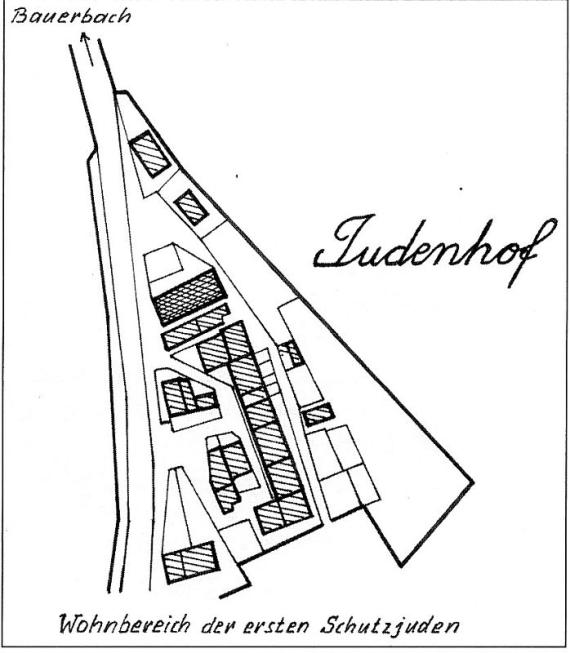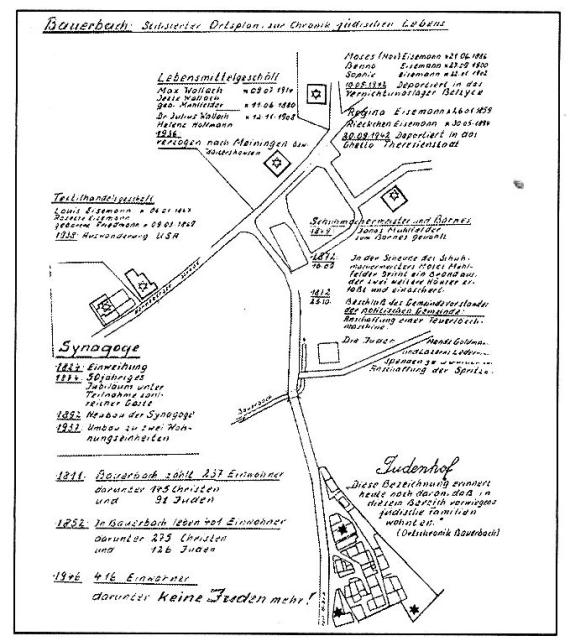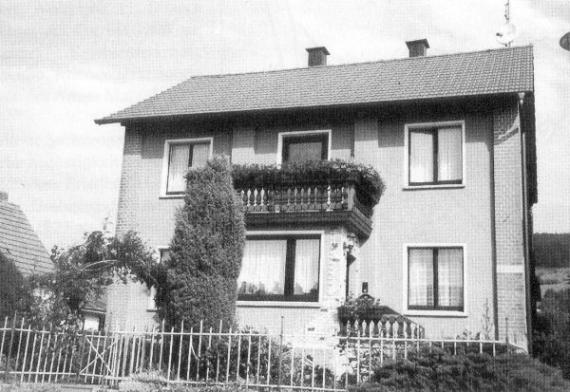In Bauerbach existed a Jewish community until 1938/41. Their emergence goes back to the time of the 17th/18th century . However, the oldest reference to Jews in the place is only a grave inscription of the Bauerbach cemetery from 1722.
In 1782 the Jew Mattich in Bauerbach, whom the poet Friedrich Schiller liked to meet during his stay in Bauerbach, and Jonas Oberländer, whom Schiller rescued from a life-threatening situation, are mentioned by name.
Exact numbers of Jewish inhabitants in the village are only available from the 19th century . In 1811 there were 91 Jewish people living in the village in 18 families besides 145 Christian inhabitants, in 1833 there are 107 Jewish and 231 Christian inhabitants, in 1851 116 Jewish inhabitants in 26 families, in 1898 75 Jewish inhabitants in 15 households. The Jewish families lived from trade with cattle, cut goods, small goods and scrap iron. Since the second half of the 19th century there were several Jewish trades and stores in the village. In 1913 only 25 Jewish inhabitants were counted, in 1924/25 still eleven. The following Jewish businesses were still in the village: grocery store Wallach, textile store Eisemann and shoemaker Jonas Mühlfelder. Around 1924 the community leaders were Louis Eisemann, A. Eisemann and E. Mühlfelder. The Jewish teacher Höxter from Bibra still gave religious instruction to a school-age child of the Jewish community. Also the three inhabitants of Ritschenhausen (today also VG Salzbrücke) belonged at that time to the Bauerbach Jewish community. In 1932 Jewish community leader was still Louis Eisemann.
In1933 there were still 13 Jewish inhabitants counted in four families. In the following years, several of them moved from the village due to the consequences of the economic boycott, increasing disenfranchisement and reprisals. Johanna Holländer died in 1934, and the Wallach family moved to Meiningen in 1936. Louis Eisemann and his wife Rosette emigrated to the USA in 1938. During the November pogrom of 1938 the windows of the home of Regina and Rieckchen Eisemann were broken and the Jewish cemetery desecrated.
In September 1942 the last Jewish residents of Bauerbach, the already mentioned Regina and Rieckchen Eisemann were deported.



Add new comment